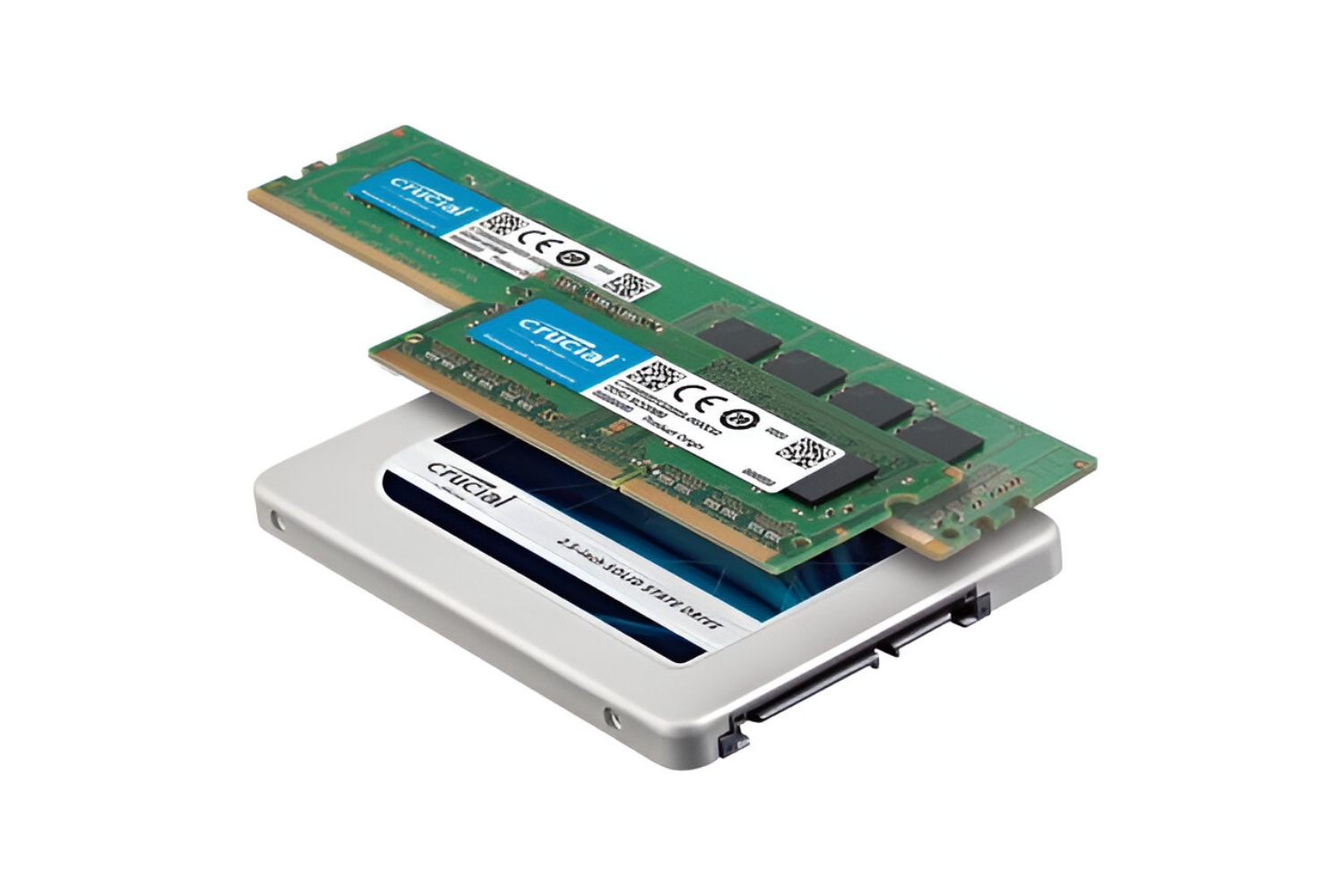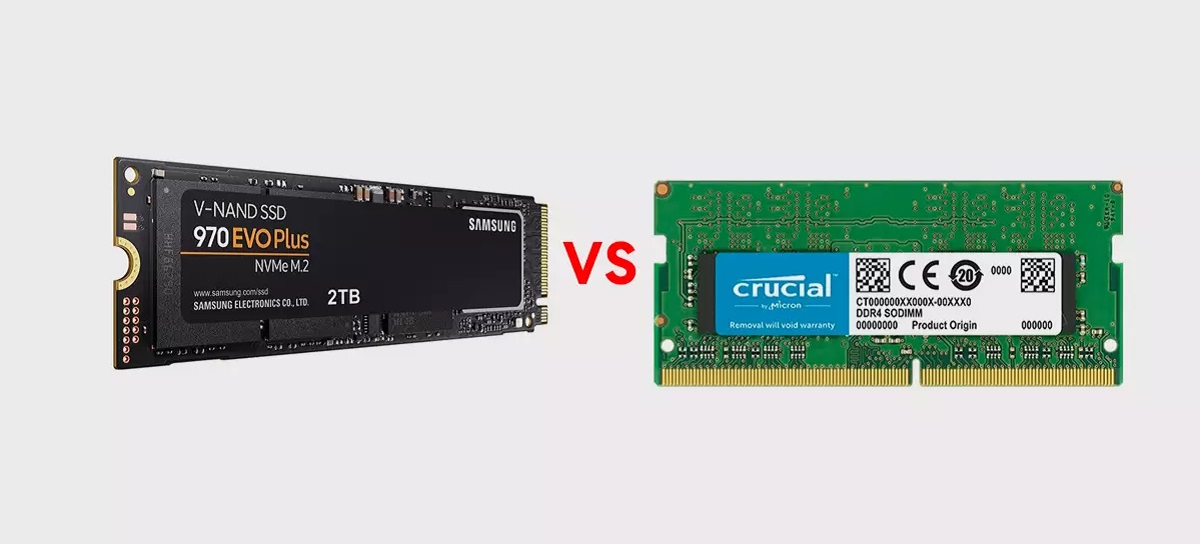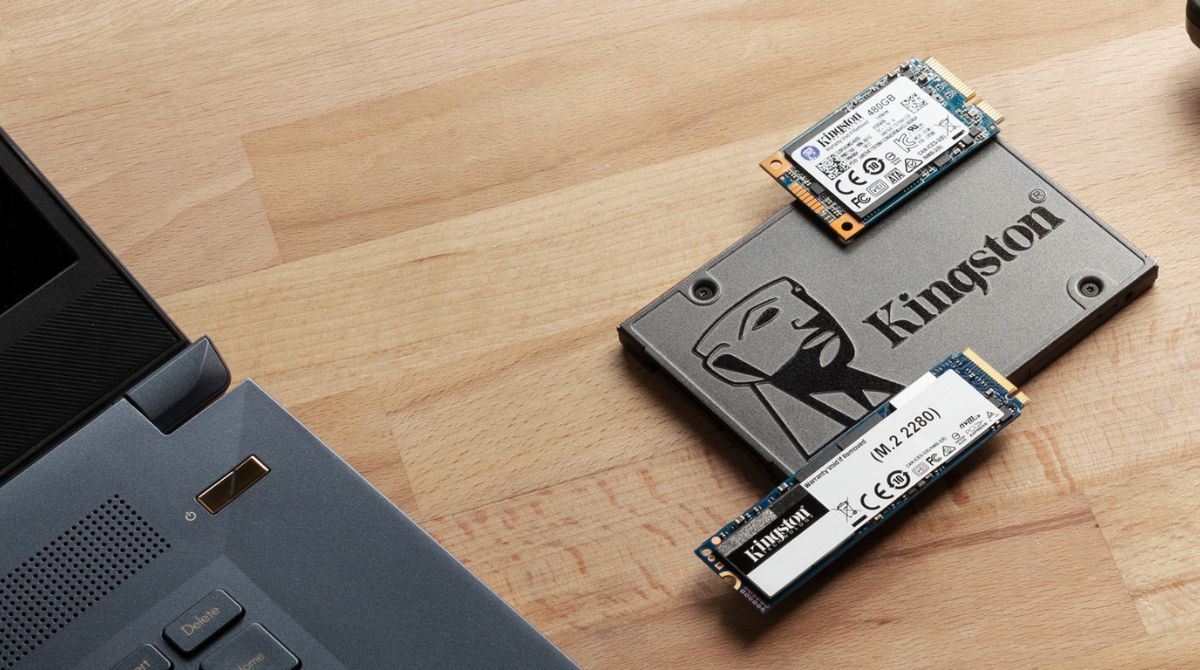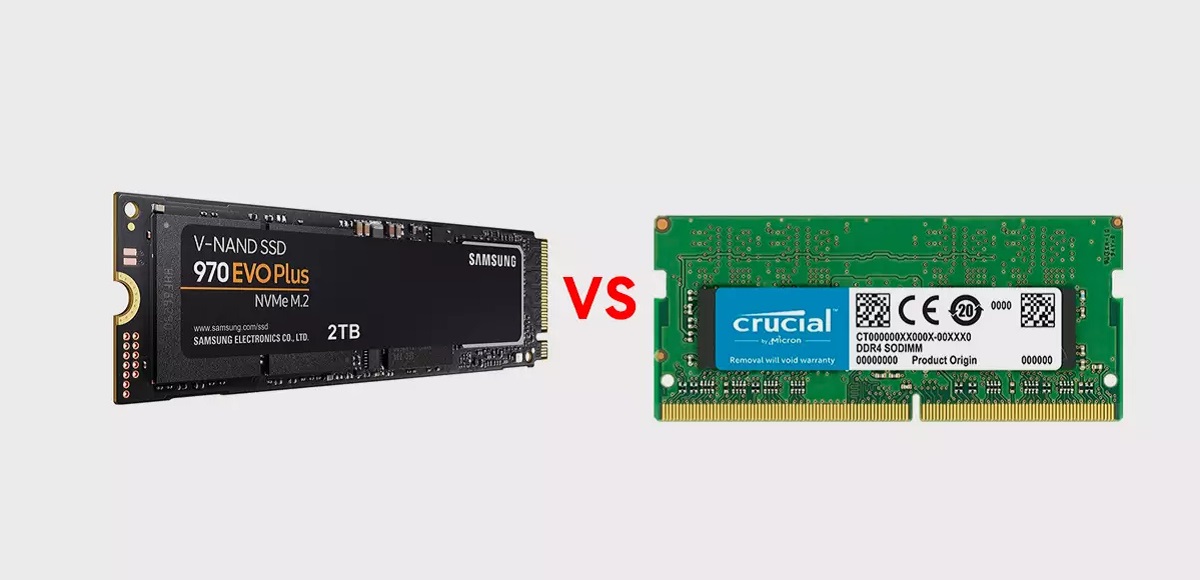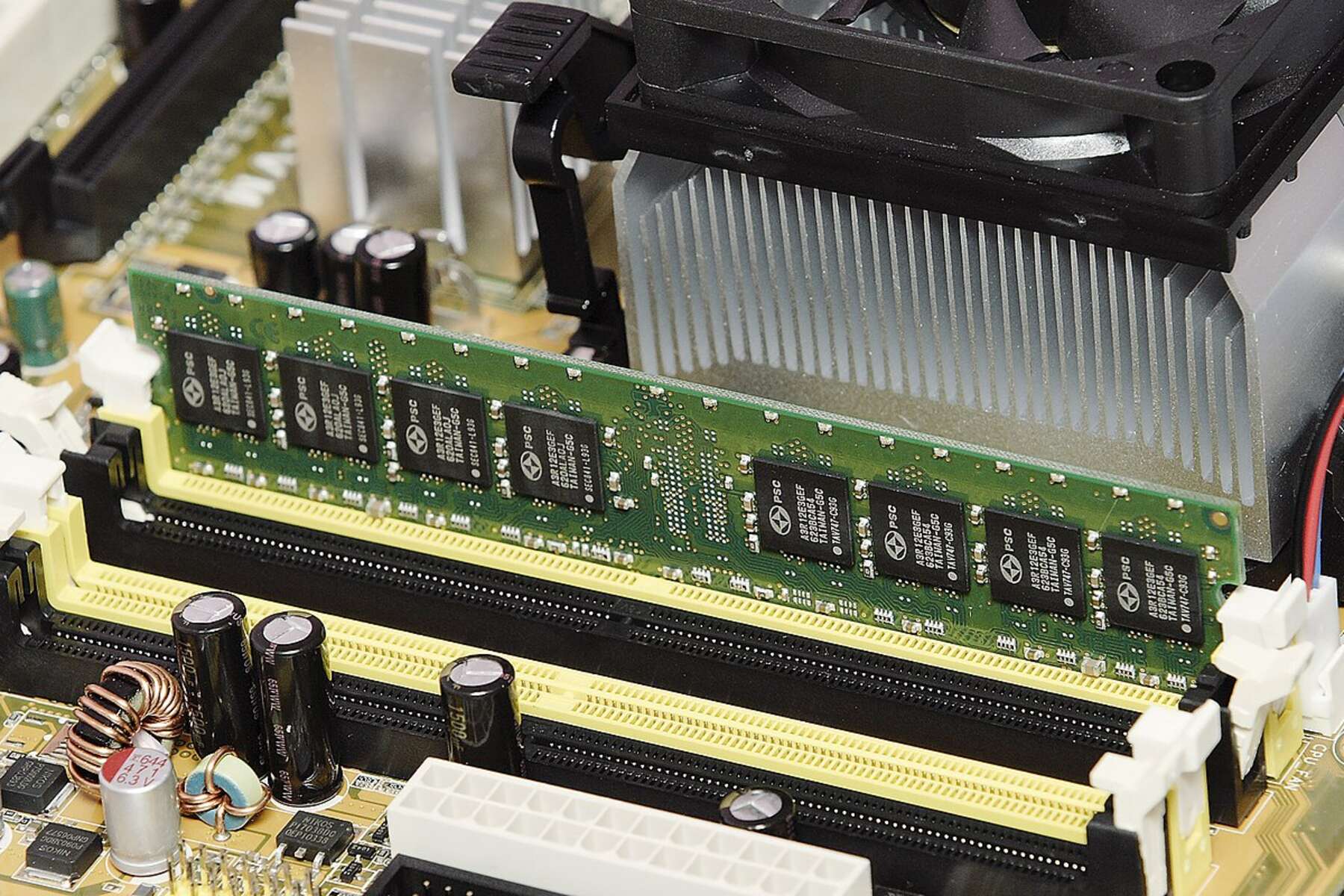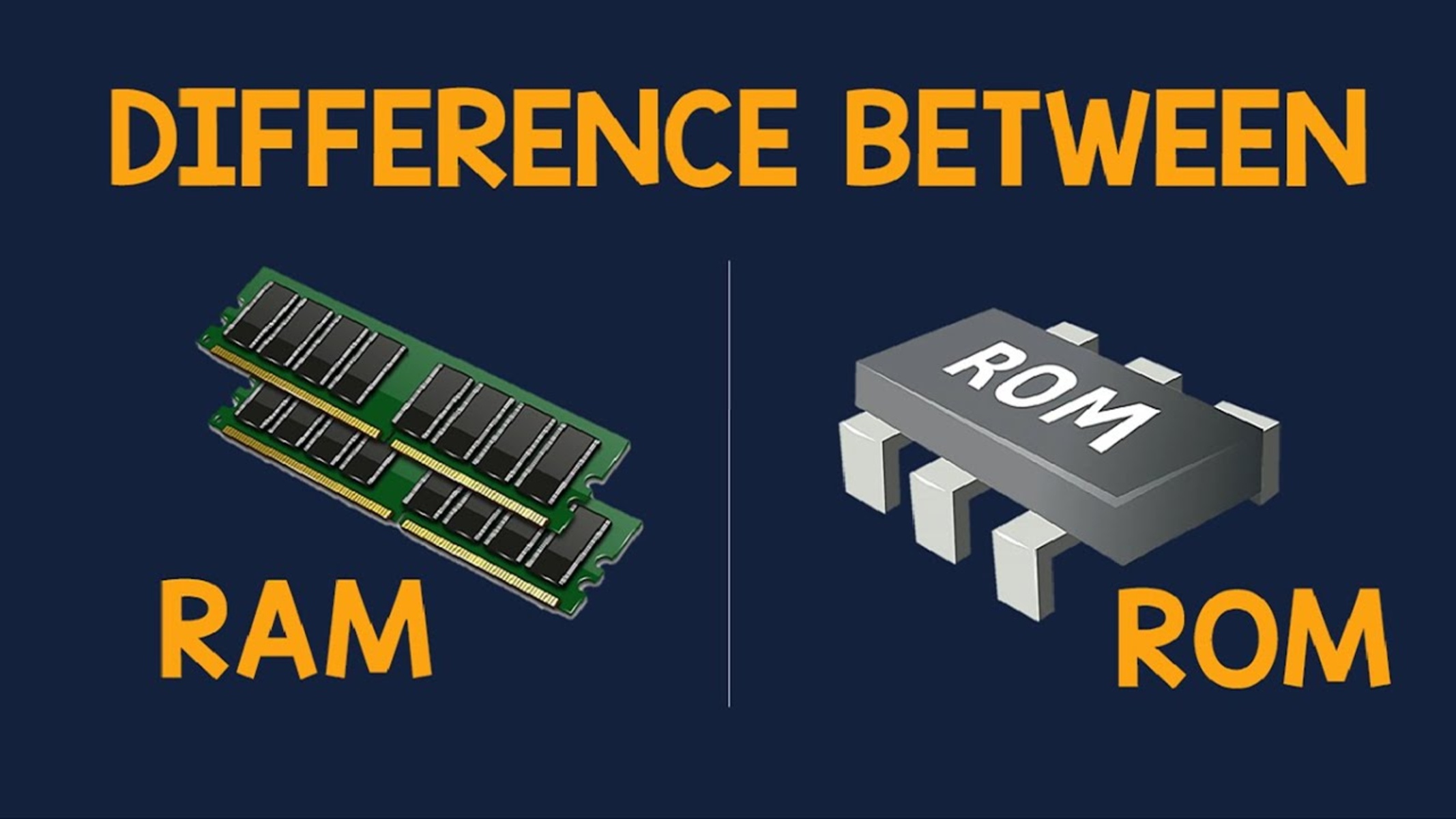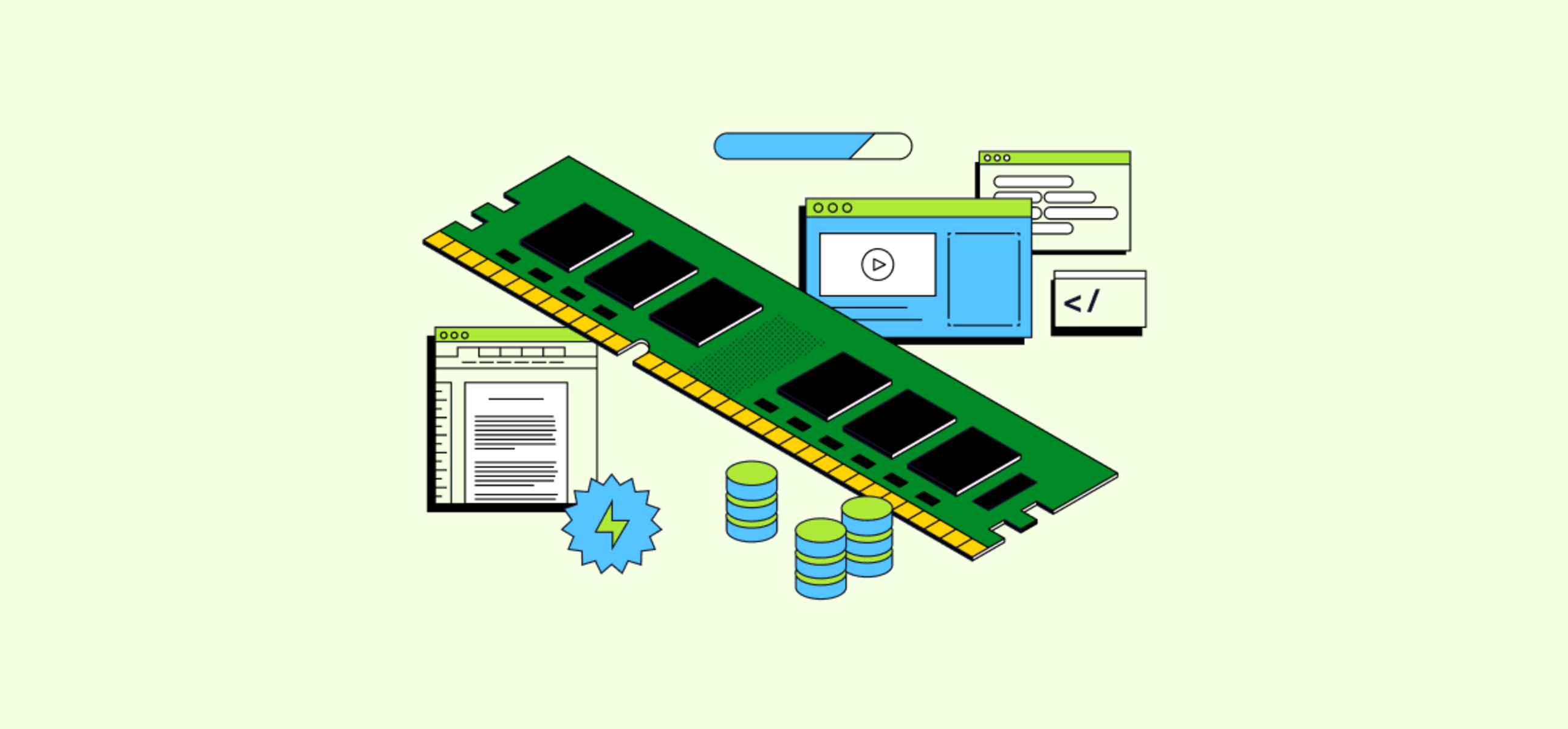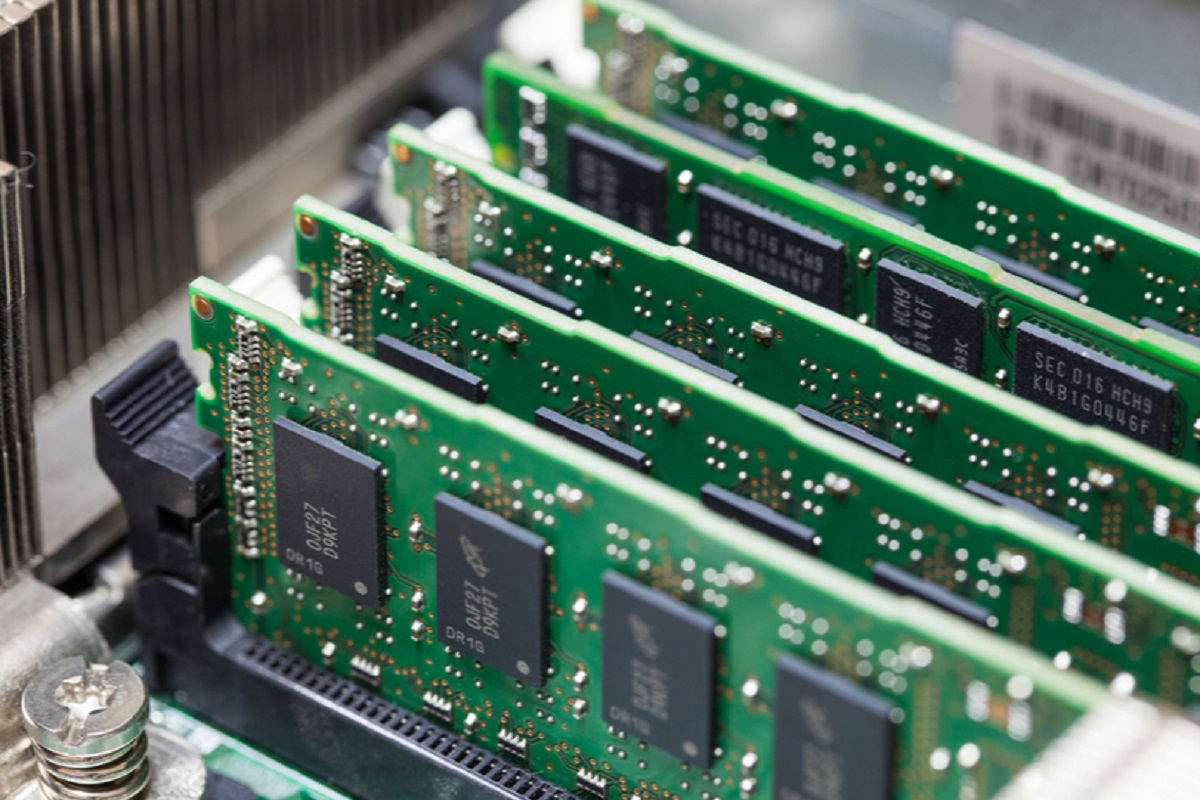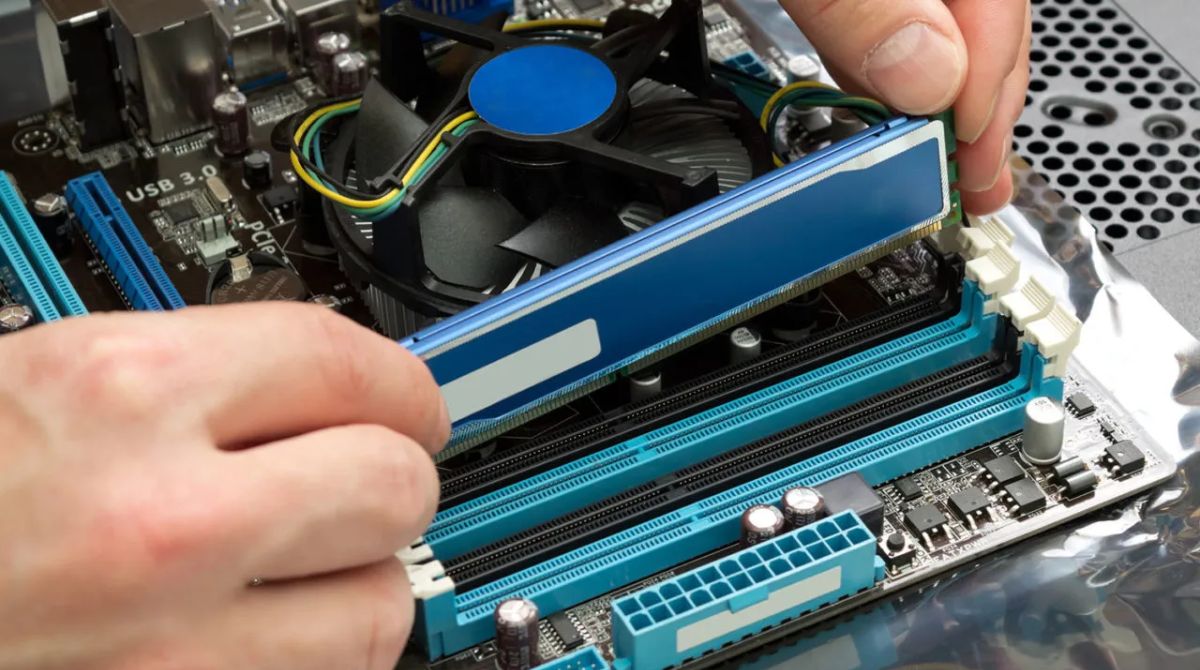Introduction
When it comes to computers and technology, two important terms often come up: RAM and storage. These two components play crucial roles in the performance and functionality of a computer system. Understanding the difference between RAM and storage is essential for anyone looking to upgrade or optimize their computer’s performance.
RAM (Random Access Memory) and storage are two distinct components in a computer system that serve different purposes. While they both store data, they do so in different ways and have different functions. RAM is a type of computer memory that allows for temporary data storage and quick access by the computer’s processor. It provides a high-speed working area where the computer can temporarily store data that is actively being used.
On the other hand, storage refers to the long-term data storage in a computer. It typically includes hard disk drives (HDDs) or solid-state drives (SSDs) that retain data even when the computer is powered off. Storage is used to store the operating system, software applications, files, documents, and various data that are not actively in use by the computer at a given time.
Understanding the distinction between RAM and storage is important because each component serves a specific purpose in the overall functioning of a computer system. While both are vital for system performance, they function in different ways and have different characteristics that impact computer operations.
This article aims to explore the key differences between RAM and storage, including their functions, capacities, speeds, costs, volatility, and how they are utilized in practice. By understanding these differences, you can make informed decisions about upgrading or optimizing your computer system to meet your specific needs.
RAM (Random Access Memory)
RAM, or Random Access Memory, is a crucial component of any computer system. It provides a high-speed working area for the computer’s processor to store and access data that is actively being used. Unlike storage, RAM is volatile, meaning that its contents are lost when the computer is powered off.
The basic function of RAM is to act as a temporary storage space for data that the computer needs to access quickly. When you open an application or run a program, the necessary data is loaded into RAM to facilitate fast and efficient processing. The more RAM your computer has, the more data it can store in this temporary work area, allowing for smoother multitasking and faster response times.
RAM is measured in gigabytes (GB), and modern computers typically come with anywhere from 4GB to 16GB or more of RAM. The amount of RAM you need depends on your specific usage requirements. For basic tasks like web browsing and word processing, 4GB to 8GB of RAM is usually sufficient. However, for more demanding applications like video editing or gaming, 16GB or more may be necessary to ensure optimal performance.
One of the key advantages of RAM is its fast data access speed. Since it is closer to the processor than storage, data retrieval times are significantly shorter. This allows for quick and seamless execution of tasks, resulting in a snappy and responsive computer experience.
Another important aspect of RAM is its cost. RAM prices have become more affordable in recent years, making it easier to upgrade and expand your computer’s memory. However, it’s important to note that the cost of RAM varies depending on the type and speed of the memory. Faster and more advanced RAM technologies, such as DDR4, tend to be more expensive than older generations like DDR3.
Overall, RAM plays a crucial role in the performance and responsiveness of a computer system. By providing a high-speed working area for the processor, it allows for quick data access and retrieval. Upgrading your RAM can be a cost-effective way to boost your computer’s performance, especially if you regularly use memory-intensive applications or multitask heavily.
Storage
Storage is an essential component in any computer system, responsible for long-term data storage. Unlike RAM, storage retains data even when the computer is powered off, making it non-volatile. This means that the data stored in storage remains accessible even after a system reboot.
The basic function of storage is to provide a permanent location for storing the operating system, software applications, files, and various data that are not actively in use by the computer at a given time. It acts as a repository for data that needs to be retained for long periods or accessed sporadically. Storage can be in the form of hard disk drives (HDDs) or solid-state drives (SSDs), each with its own advantages and disadvantages.
One of the primary factors to consider when it comes to storage is capacity. Storage capacity is measured in gigabytes (GB) or terabytes (TB), and modern computers typically come with storage capacities ranging from 256GB to several terabytes. The capacity you need will depend on your specific needs, whether it’s for storing large multimedia files, extensive software libraries, or a vast collection of documents.
While storage provides ample capacity for storing data, its access speed is slower compared to RAM. This is because the data stored in storage needs to be retrieved from magnetic disks (in HDDs) or flash memory cells (in SSDs). However, with the advent of SSD technology, storage access speeds have significantly improved, offering faster data retrieval and overall system performance.
When it comes to cost, storage is generally cheaper than RAM on a per-gigabyte basis. However, the cost per gigabyte can vary depending on the type and technology of the storage device. HDDs are typically more affordable compared to SSDs, but SSD prices have been gradually decreasing as the technology becomes more mainstream.
Storage is a critical component for storing all your files, applications, and operating system. It provides the permanent storage needed for long-term data retention. Upgrading your storage capacity or opting for faster storage technologies like SSDs can significantly improve system performance by reducing data access times and increasing overall responsiveness.
Basic Function
The basic function of RAM and storage in a computer system is distinct and serves different purposes. RAM, or Random Access Memory, provides a high-speed working area for the computer’s processor to store and access data that is actively being used. Its primary function is to facilitate quick data retrieval and processing, allowing for efficient multitasking and smooth application execution. RAM acts as a temporary storage space, holding data that the computer needs to access frequently and quickly.
In contrast, storage is responsible for long-term data storage. Its primary function is to provide a permanent location for storing the operating system, software applications, files, and other data that are not actively in use by the computer at a given time. Unlike RAM, storage retains data even when the computer is powered off, making it an essential component for data preservation and accessibility.
The fundamental difference in function between RAM and storage lies in their access speeds. RAM is several orders of magnitude faster than storage, allowing for near-instantaneous data retrieval and processing. Since RAM is directly connected to the computer’s processor, it can quickly provide the required data for tasks, resulting in snappy performance and responsive user experiences.
On the other hand, storage access speeds are comparatively slower due to the physical nature of the storage media. Hard disk drives (HDDs) have spinning platters and read/write heads, while solid-state drives (SSDs) use flash memory cells. Both types of storage devices require mechanical or electrical processes to access and retrieve data, resulting in longer access times compared to RAM.
Despite the differences in access speeds, both RAM and storage are crucial components in a computer system. RAM provides the temporary work area for immediate data needs, while storage offers the larger capacity and long-term data storage. The optimal functioning of a computer depends on a balance between the speed and capacity provided by RAM and storage.
By understanding the basic functions of RAM and storage, you can make informed decisions when it comes to upgrading or optimizing your computer system. Consider your specific usage requirements, such as the type of software applications you use and the volume of data you need to store, to determine the ideal balance between RAM and storage for your needs.
Capacity
The capacity of RAM and storage refers to the amount of data that can be stored in each component. However, the capacity of RAM and storage differs significantly in terms of size and purpose.
RAM capacity is measured in gigabytes (GB) and determines how much data the computer can store and access at any given time. Modern computers typically come with RAM capacities ranging from 4GB to 16GB or higher. The amount of RAM you need depends on your specific usage requirements. For casual web browsing, word processing, and multimedia consumption, 4GB to 8GB of RAM is generally sufficient. However, for memory-intensive tasks such as video editing, graphic design, or gaming, 16GB or more may be necessary to ensure smooth performance.
In contrast, storage capacity refers to the amount of data that can be stored in a storage device. It is measured in gigabytes (GB) or terabytes (TB). A standard storage configuration in modern computers may range from 256GB to several terabytes. The capacity you need depends on the type and volume of files you plan to store. If you primarily work with documents, images, and videos, a larger storage capacity is recommended. However, for users who rely heavily on cloud storage or external drives, a smaller internal storage capacity may be sufficient.
It’s important to consider your storage needs when evaluating the capacity of your computer. If you frequently work with large files or have numerous applications and games installed, a higher storage capacity may be beneficial. Additionally, if you anticipate that your storage needs will increase over time, choosing a computer with expandable storage options or opting for external storage devices can provide flexibility in managing your data.
When determining the ideal capacity for both RAM and storage, it’s essential to strike a balance between performance and cost. Upgrading to higher capacities can improve system responsiveness and multitasking capabilities, but it may incur additional costs. Consider your budget and specific usage requirements to find the optimal capacity that meets your needs without exceeding your financial limitations.
In summary, RAM and storage capacities play critical roles in a computer system. RAM capacity determines the amount of data that can be accessed and processed quickly, while storage capacity dictates the total amount of data that can be stored. Evaluating your usage requirements and striking a balance between RAM and storage capacities can ensure optimal performance and efficient data management.
Speed
When it comes to computer performance, the speed of both RAM and storage plays a crucial role. However, there are significant differences in how quickly each component can read and write data.
RAM, or Random Access Memory, is designed to provide ultra-fast access to data. It is located near the processor, allowing for quick communication and data transfer between the two components. RAM operates at speeds measured in nanoseconds (ns) or megahertz (MHz). The higher the speed, the faster the RAM can read and write data. Faster RAM speeds result in smoother multitasking, quicker application launch times, and overall enhanced system responsiveness.
Storage, on the other hand, has traditionally been slower compared to RAM. Hard disk drives (HDDs) and solid-state drives (SSDs) have different speed characteristics. HDDs use spinning disks and mechanical read/write heads, resulting in longer access times and slower data transfer rates. SSDs, on the other hand, use flash memory and have no moving parts, allowing for significantly faster data access speeds. SSDs can read and write data several times faster than HDDs, leading to improved system boot times, faster file transfers, and reduced application load times.
It’s important to note that while both RAM and SSDs offer fast data access speeds, their speeds are not directly comparable. RAM operates at near-instantaneous speeds, while SSD speeds are measured in microseconds (µs) or milliseconds (ms). However, both components contribute to overall system performance and can significantly impact the user experience.
When it comes to speed, having sufficient RAM capacity can reduce the reliance on storage for data retrieval. With enough RAM to store frequently accessed data, the need to retrieve information from storage is minimized, resulting in faster system performance. Additionally, utilizing solid-state drives (SSDs) instead of traditional hard disk drives (HDDs) for storage can further enhance speed, as SSDs offer faster data transfer rates and lower latency.
Overall, the speed of RAM and storage is essential for a smooth and efficient computing experience. Investing in faster RAM and adopting SSDs for storage can greatly improve system responsiveness, reduce loading times, and enhance overall productivity.
Cost
Cost is a significant factor to consider when comparing RAM and storage options for your computer system. Both components have different cost structures based on factors such as capacity, speed, and technology.
RAM, or Random Access Memory, is generally more expensive compared to storage on a per-gigabyte basis. The cost of RAM depends on several factors, including the type, speed, and capacity. Faster and more advanced RAM technologies, such as DDR4, tend to be more expensive than older generations like DDR3. Additionally, larger capacities of RAM come at a higher cost. It’s important to note that RAM prices can fluctuate and may vary depending on market demand and technological advancements.
Storage, on the other hand, is generally more affordable than RAM. The cost of storage depends on the type and technology, with solid-state drives (SSDs) typically being more expensive than hard disk drives (HDDs). However, SSD prices have been gradually decreasing, making them more accessible to a wider range of users. Additionally, the cost per gigabyte of storage decreases as the capacity increases. This means that higher capacity storage devices are often more cost-effective in terms of price per unit of storage.
It’s important to consider your specific needs and budget when evaluating the cost of RAM and storage. Assessing your usage requirements, such as the type of tasks you regularly perform and the amount of data you need to store, can help you determine the ideal balance between RAM and storage capacities.
When it comes to upgrading or expanding your computer system, it’s advisable to assess whether your existing RAM and storage meet your needs before making a decision. If your computer slows down or struggles to handle new applications, increasing the RAM capacity can often provide a noticeable improvement in performance. On the other hand, if you find yourself regularly running out of storage space or experiencing slow file transfers, upgrading to a higher-capacity or faster storage solution can help alleviate these issues.
Ultimately, the cost of RAM and storage should be considered alongside other factors, such as performance requirements and longevity. While RAM may be more expensive upfront, investing in an adequate amount of RAM can significantly enhance system performance and multitasking capabilities. Similarly, investing in storage with sufficient capacity and speed is crucial for efficient data management and accessibility. Weighing the cost against the benefits can help you make an informed decision and ensure that you get the most value out of your computer system.
Volatility
Volatility is an important characteristic that sets RAM and storage apart. RAM, or Random Access Memory, is a volatile form of memory, meaning that its contents are lost when the computer is powered off or restarted. This is because RAM relies on electrical current to store and access data. As soon as the computer loses power, the data stored in RAM disappears.
Since RAM is volatile, it is designed for temporary storage purposes. It acts as a high-speed workspace for the computer’s processor, allowing for quick access to data that is actively being used. Any data that needs to be retained for long-term use is typically stored in non-volatile storage, such as hard disk drives (HDDs) or solid-state drives (SSDs), which retain data even when the computer is powered off.
On the other hand, storage is non-volatile and retains data even without power. This means that the data stored in storage remains intact and accessible even after a system reboot. Whether it’s an HDD or an SSD, the data remains stored on the storage device until it is intentionally deleted or overwritten.
The volatility of RAM can be both an advantage and a limitation. The advantage lies in its ability to provide fast and temporary storage for data that the computer needs to access frequently. The volatile nature of RAM enables quick data retrieval and processing, making it essential for tasks that require immediate access to information. However, the limitation is that any unsaved data in RAM is lost in the event of a power failure or system shutdown, emphasizing the importance of saving work regularly.
Storage, with its non-volatile nature, is crucial for long-term data storage. It allows users to save important documents, files, and applications that need to be retained over extended periods. Data stored in storage remains intact even after rebooting the computer, making it a reliable storage option for preserving files that need to be accessed across multiple sessions.
Understanding the volatility of RAM and storage is essential for effectively managing data and ensuring data integrity. It’s important to save work regularly to avoid losing unsaved data stored in volatile RAM. Additionally, utilizing non-volatile storage ensures that important files and data are retained even after powering off or restarting the computer.
By recognizing the volatility of RAM and the non-volatile nature of storage, users can make informed decisions when it comes to data storage, backup strategies, and overall computer usage.
Usage
RAM and storage serve different purposes and have distinct roles in computer systems. Understanding their usage scenarios can help determine their optimal configuration for specific needs.
RAM, or Random Access Memory, is essential for tasks that require fast and immediate data access. It is particularly valuable for applications that demand real-time processing, such as gaming, video editing, and 3D rendering. The large and complex data sets involved in these applications can be stored in RAM, allowing for quick retrieval and manipulation. Additionally, RAM is crucial for multitasking, enabling smooth and seamless transitions between different applications and processes. The more RAM a computer has, the more efficiently it can handle multitasking without slowing down.
Storage, on the other hand, is vital for long-term data storage and data archiving. It is ideal for storing files, documents, multimedia content, and applications that are not actively in use. Traditional hard disk drives (HDDs) are typically chosen for large-capacity storage needs, such as storing extensive music libraries, photo collections, and video archives. Solid-state drives (SSDs), with their faster access speeds, are well-suited for storing frequently accessed files and applications that require quick loading times.
The usage of RAM and storage also depends on the type of computer user. For casual users who primarily engage in web browsing, email, and word processing, moderate amounts of RAM (4GB to 8GB) and sufficient storage capacity (256GB to 512GB) are usually adequate. However, power users, such as graphic designers, video editors, and gamers, would benefit from higher RAM capacities (16GB or more) to handle memory-intensive tasks, as well as larger storage capacities to accommodate their extensive files and projects.
It’s worth noting that cloud storage and external storage devices also play a role in enhancing storage capabilities and usage. Cloud storage services provide convenient and accessible storage options, allowing users to store files offsite and access them from anywhere with an internet connection. External storage devices, such as external hard drives or USB drives, offer additional storage capacity and portability.
Optimizing the usage of RAM and storage involves evaluating your specific needs, considering the types of applications you use, the size of your data files, and the level of multitasking you require. Striking a balance between RAM and storage capacities can ensure smooth performance and efficient data management. Upgrading or expanding either component can improve system performance and enhance the overall user experience.
By understanding the usage scenarios for RAM and storage, users can make informed decisions to maximize the capabilities of their computer systems and tailor them to their specific needs.
Conclusion
Understanding the difference between RAM and storage is essential for optimizing computer performance and meeting specific usage requirements. RAM, or Random Access Memory, provides a temporary and high-speed working area for the computer’s processor, facilitating quick data access and processing. On the other hand, storage offers long-term data storage and preservation, allowing for the retention of files even when the computer is powered off.
RAM and storage have distinct characteristics that impact computer operations. RAM is volatile, meaning its contents are lost when the computer is powered off, while storage is non-volatile and retains data even after system reboots. The speed and capacity of RAM and storage also differ, with RAM offering fast data retrieval but limited capacity compared to storage.
When considering RAM and storage upgrades, it is important to assess specific usage requirements and balance the need for speed, capacity, and cost. Power users who engage in memory-intensive tasks, such as gaming, video editing, or graphic design, may benefit from higher RAM capacities to ensure smooth multitasking and quick application performance. Storage capacity should be determined based on the volume of files and the need for long-term data preservation.
Ultimately, the optimal configuration for RAM and storage depends on individual needs, budget, and usage patterns. Striking a balance between the two components and considering factors such as speed, capacity, and volatility can result in a well-rounded computer system that offers efficient performance, data management, and user experience.
Whether upgrading an existing computer or purchasing a new system, it is essential to carefully evaluate the specific requirements and seek out the appropriate RAM and storage options. Keeping up-to-date with advancements in technology can provide insights into the latest developments in RAM and storage, enabling users to make informed decisions.
By understanding the distinctions between RAM and storage, users can optimize their computer systems to meet their specific needs, whether it’s for smooth multitasking, quick data access, or efficient long-term data storage. The right balance between RAM and storage is key to enhancing computer performance and ensuring a seamless user experience.







